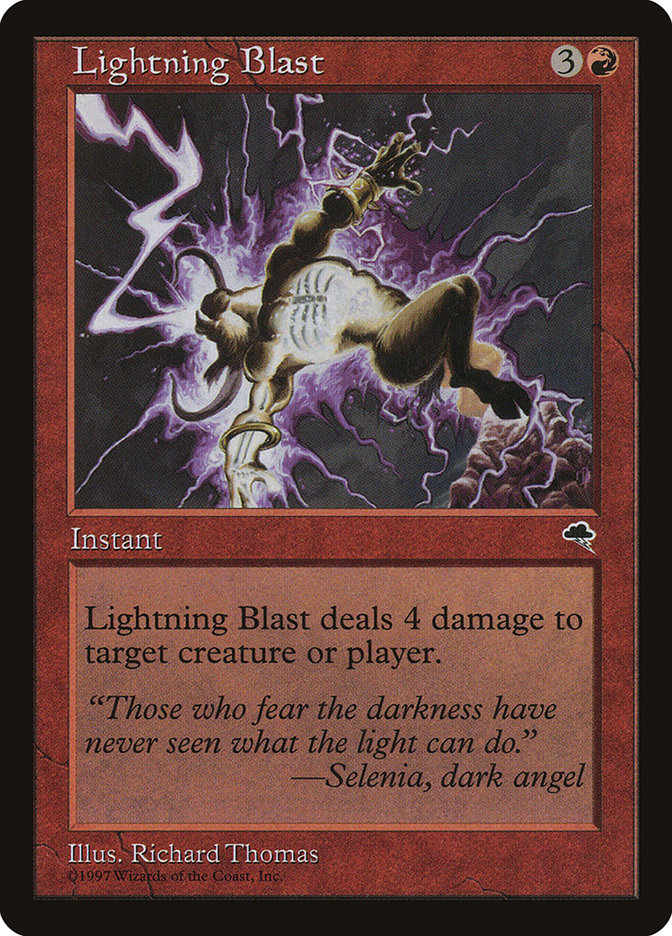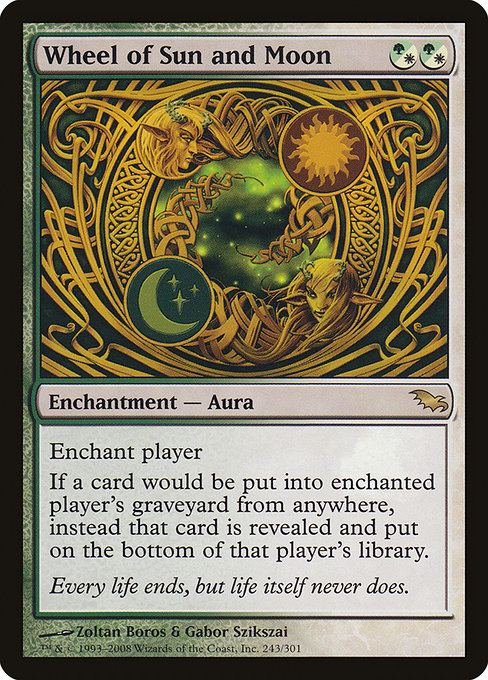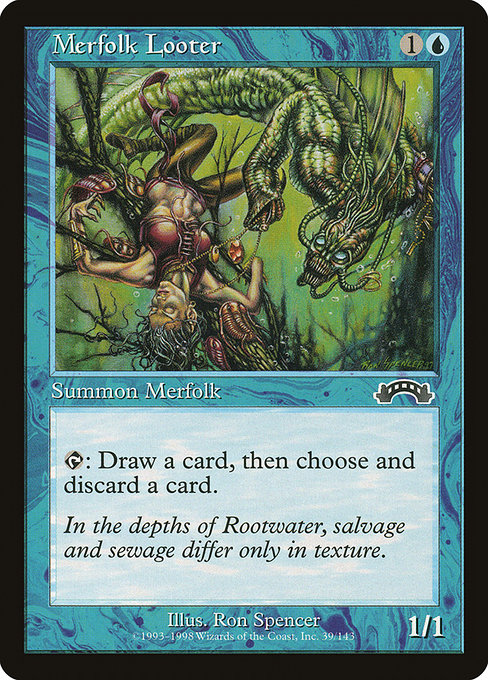Most players think of power just in relation to what a card does and how much it costs to play, and for the most part this is the relevant way to consider the power of a card. We all know intuitively that a Lightning Bolt is a far more powerful card than a Lightning Blast despite the Blast actually being a direct upgrade in effect. Once you disregard mana cost there is only nominal power, which isn't often that useful of a sole measure in magic. What you are in fact dealing with when disregarding costs, is power per card. Power per card is the unit by which we understand the cardboard problem and it could be defined as simply having insufficient power per card within your deck and nothing to do with power per mana, which might well be high.
Most players will not really have encountered the cardboard problem, or at least not to any sufficient degree to notice it. Three factors contribute to it, library size, format power, and format balance/game length. For constructed and EDH the library size is too big to be relevant, and in limited the power level is too low for it to be relevant. It is only really in some kinds of cube and in 15 card highlander that you can appreciate it. It was also a pretty big deal in Hearthstone where balance was pretty good and deck size was only 30 cards. This is all well and good, but what actually is the cardboard problem? How is it relevant?
Simply put, the cardboard problem is where you are running out of cards, not in hand, but in your deck, and that is what is deciding the game. It is not even really a decking problem. If you play any of these formats where the cardboard problem can be seen while adding the rule where you don't lose by trying to draw from an empty library, the result is much the same. There becomes a point in many games where you just know you don't have enough gas left in your deck to get the job done. You didn't run out of life, you didn't run out of things to do, you didn't lose to screw, you just didn't have enough overall power to get the job done.
So why is this a problem? Surely just add more powerful cards into your deck? Certainly this works to a point, but you start to get all a bit clunky. You need those cyclers and cantrips to smooth out a draw so you don't stumble to a screw or flood early. You need cheaper cards to be involved in the early game, and you really want some sources of card advantage so that as you develop your mana in the mid and late game you are able to cast multiple cheaper spells in a turn. This is all good basic magic. So yes, if you cut out the cheaper cards and draw cards too much it stops being a problem because you lose well before it would come up! Build your cube deck properly, or optimally, however and things can start to get a bit sketchy in a closer longer game. You are now straddling a fine line between early game consistency and keeping pace, without burning through resources recklessly and overly churning through your deck such that you will have enough gas to compete in the long game. In other words consistency and raw nominal power start to compete with each other in your build.
It is easy to see why library size affects this cardboard problem. A more powerful format tends to have more effective means of drawing cards and churning through a deck, it will do these things more quickly, and it will also tend towards having cheaper cards overall, thus commanding more draw effects so as to keep the tap running. Deck size, as with life, only starts to be relevant when it is running out which is why the balance of the meta is relevant. More balance translates to longer games. I avoided saying slower formats as these are more typically corelated with less powerful formats. It is this general lack of balance that I attribute to masking this problem in most cube settings. Relatively few cubes are built primarily for balance and as such the number of games you see that are still close as either player nears the end of their deck is low. And fewer still where both players hit the final quarters of their decks in the same match.
I was only starting to notice this problem in the last few years of cube. I was opting to play threats instead of value generation. I was cutting down on the filler cards that I was playing but it was minor. Not worth worrying about and easily countered with minor draft and deck building adjustments. Along comes my homemade cube project which is incredibly balanced and full of value and filler cards but deficient in finishers. Something like a quarter of the games are getting to the point where both players have libraries in the single figures size wise. We have been doing a lot of best one one to give you an idea of quite how balanced and long games are!
I thought this might be an issue while designing it and so had a bunch of cards that put things from your graveyard on the bottom of your library but it was a terrible fix in practice. It is like lifegain, you just don't want to invest in it ever. It is not a relevant thing until right at the end of the game and as such you are just way better off spending any resources on being in a better position prior to that. With things like escape and delve kicking about putting cards back into your library is often a drawback as well! The only way to include reshuffle effects is to slap them on for free but this is messy and a bit random. I think I would argue for playing with 50 card decks before relying on that "Wheel of Sun and Moon" strategy to try and solve the problem. So the problem I envisaged is real, and the fix I included for it failed.
The other way to approach the problem in a design sense is to speed up the game. You do this with power in a general sense but ideally directed power. Power up the tempo effects, threats, and things that provide reach (or the capacity to close out a game) within your meta. Comically it is exactly that which I have been complaining about WotC doing for a while. But then their formats are not really suffering the cardboard problem so I can still argue that they are over doing it! Regardless, I under did it in my powerful cards and reachy cards that can end games. As such, I designed a whole bunch of extra tempo threats, high nominal power cards, and things that end games, I printed them off and things have improved a bit, but only a bit. Turns out it doesn't change all that much if you do it for both sides. The issue is that my card design overall follows a pattern of avoiding being win more or polar or random and so that inherent balance of card is the problem, not so much the lack of threats or power of them etc. You need wayward, random cards apparently! Blood Moon style hosers, protection and landwalk abilities which are blank in some matchups and unbeatable in others. What I am getting at is that what I think of as "bad design" is a large part of what has kept the cardboard problem away from cube until recently.
So, what is the upshot of all this? What is the takeaway? I think the big one is that Magic has a cap on it. You cannot infinitely improve in any one area without ultimately starting to incur costs in others. This should obviously be no shock, this is exactly how things work in the real world. As you iron out any perceived flaws (such as inconsistency) you incur new challenges (in this case both game length and the cardboard problem).
Really now we are getting to the nub of it, because it is not really a problem, it is just a facet of the game. I am just calling it a problem because I have a bias at play. My favourite thing to do in magic is draw cards. Beyond that I like to be doing stuff. I am happy as Larry spinning wheels. Lots of moving parts with little going on is where I am at. These decks are packed full of things like Chromatic Star and Mishra's Bauble, full of cyclers, Preordains, tutors, and raw draw. It all works together in harmony but the power per cards is low. These decks often struggle to win despite getting to do their thing and this is usually due to the cardboard problem. Another solid reason why EDH is so popular! Basically I find increasingly I am having to cut down on these types of cards I enjoy in my decks and consequently in my cubes and this makes me a bit sad. Card design helps a little but I cannot have it all! I think the 50 card library size might be the best fix on offer but as with any fix, it is just extending your buffer, you are not removing a cap.
A large takeaway from this principle, and one all 15 card highlander players are only too aware of, is that card draw spells and effects are themselves capped and have diminishing returns prior to their cap. Over draw is a common mistake players make in cube. Value tools only generate consistent power returns in an infinite library. As with any real library, a finite library yields diminishing returns on value generation.
It is one of those things you can have some fun applying a bit of maths to. In a 40 card deck you have roughly 32 draws available to you before you have to have achieved a win assuming you have no effects that can recycle used cards back into your deck. Assuming you have no card draw cards, no cyclers, and nothing that thins or mills the deck, then bam, you have a bit over 30 turns to win, lots of time, should be plenty. Start to throw in those other effects however and the potential game length you can fight for quickly shortens. Each sac land is two cards. Each time you cycle it is two cards. A Night's Whisper is three cards down. Each one of these that thins or reduces down the deck brings you closer to the other ones that do it as well. They all scale up with each other. You can directly over do it and mathematically demonstrate that fact. If you know you ideally need 14 turns to win but your average card is actually 2.5 cards from your deck then you simply won't have the stuff to get you there too much of the time. You will be out of stuff before you can win, that or, much more likely, you will be sat slowly losing with stuff in hand you cannot afford to use or that has been somehow already rendered useless. 2.5 might sound like a lot but it really isn't in cube. Many cards wind up being two, and plenty can be a lot more. A Faithless Looting is five, a Fact or Fiction is six. Sure, most decks will win by turn 14 and most won't quite hit the 2.5 cards average but that is just for the average game. You can have well under those numbers but just happen to have a long game and the cardboard problem will scupper you. You really want to minimize the chance of it happening which means shifting the whole centre of the bell curve away from this point, which means being incredibly conservative with "do nothings", card draw and filler in the slower decks.
One little aside that I find somewhat mindboggling is that the cardboard problem is sufficiently noticeable in my homemade cube that a one mana Merfolk Looter does not get play. The above card but jsut a blue mana to deploy! The power level in my homemade cube is absolutely lower than unpowered cubes, there is plenty of (non-combo) graveyard synergy, and yet a one mana Looter cannot get play time. A card that is a fine card, but then halved in price! Imagine a Concentrate or a Rampant Growth at half price! A Wrath of God? You get the idea... This means essentially you are saying that committing to a sufficient number of loots to make the Looter worth it in card quality and support terms, incurs too much of a cost in terms of unused card resources to be a wise play. It is a direct casualty of the cardboard problem. I come from a background in magic where the idea that an unanswered turn one Looter not providing ample consistency to reliably win the game hard to comprehend. It is good that we have now reached a point where the game is balanced sufficiently that I don't need to comprehend it, I can experience it first hand!








No comments:
Post a Comment